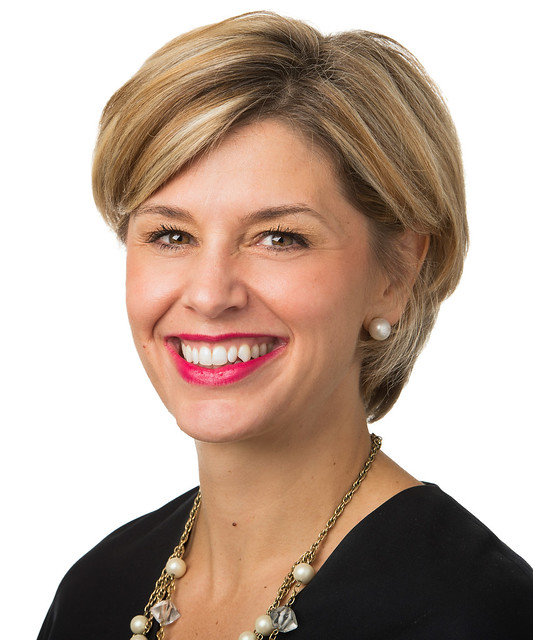On April 12, students interested in learning more about Outsourced Chief Investment Officers (OCIOs) participated
in a small group discussion hosted by Nikki Wellmann Kraus, CFA. The event was one of several pop-up
workshops that NDIGI has sponsored this semester.
Kraus graduated from the University of Notre Dame with a B.A. in English and Computer Applications. She is
currently the Managing Director and Global Head of Client Development at Strategic Investment Group, where she
oversees the building of client relationships and drives the firm’s marketing strategy. Kraus has over two decades of
experience in the OCIO industry, and she recently co-authored Endowment Management for Higher Education
(AGB Press, June 2017).
What is an Outsourced Chief Investment Officer?
As the market environment continues to grow increasingly complex and the prospects for achieving an institution’s
return objectives while mitigating costs and risk becomes harder, institutions and universities frequently hire an
OCIO. While larger universities such as Notre Dame and Harvard have their own investment team to manage their
portfolio, an OCIO can help overstretched and under-resourced fiduciaries fulfill their wide-ranging and complex
responsibilities. The ideal OCIO relationship is a nearly seamless extension of an institution’s fiduciary bodies and
internal staff, complementing them with the additional resources needed to manage their investment portfolios
effectively.
The fiduciary responsibility of serving as a good steward for the institution’s investment assets goes beyond
building a robust and efficient investment program that meets its annual goals and objectives. It also requires that
those assets be allocated in a way that supports the institution’s long-term mission. Hiring an OCIO therefore, is not
an easy decision and as Kraus pointed out, it often takes up to three years to develop a relationship where an
institution ultimately joins Strategic Investment Group as a client.
The process in determining whether an institution is a good fit as a client in an OCIO partnership depends on many
factors, yet it starts with a shared investment philosophy. Once an institution becomes a client, the on boarding
process begins with the design of an investment policy that defines their goals and objectives and helping clients
determine their risk tolerance. It is only then that an asset allocation framework can be developed from which the
hiring and firing of managers on a client’s behalf can be implemented. It is through this process, which also
encompasses daily risk management analytics, that an OCIO is able to bring to its clients the benefits of a multi-
billion dollar portfolio, traditionally only available to multi-billion dollar institutions.
An outsourced relationship frees clients from the day-to- day business of managing investment portfolios so they
can focus on their core mission and allow the investment committee or fiduciary body to extricate itself from
second order tasks and refocus its energies on strategy, policy setting, and oversight.
The OCIO marketplace is one of the fastest growing sectors of finance, as the number of OCIO firms grew from 5
to 105 in the last thirty years.
Career Advice for OCIOs
Kraus also told the students what she looks for in candidates during the hiring process. Intellectual curiosity,
composure, engagement, and preparation are all qualities that candidates should have, and Kraus emphasized that
there is no excuse for an interviewee not knowing anything about the company or whom they are interviewing with.
She also mentioned the importance of taking notes during interviews to show that you are serious about the job
opportunity.
When Strategic’s team selects investment managers, Kraus said the team conducts tremendous due diligence on the
investment management firm which also includes how the potential new manager fits with the existing manager
team. “While you always want to do the right thing, there isn’t a set formula to blend the science and art of building
the optimal portfolio,” Kraus said. Strategic’s team does not always choose the longstanding investment manager
over the newcomer. Managers need to show stability and have a good track record that demonstrates a repeatable
skill.
